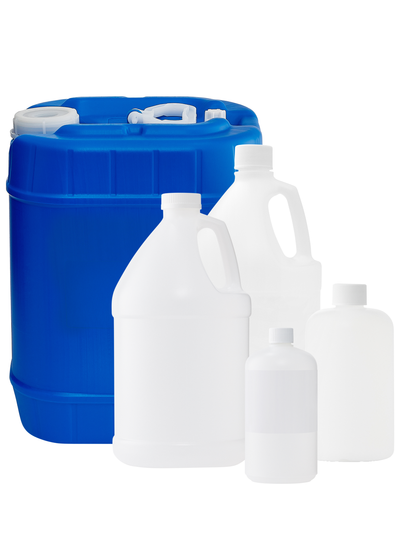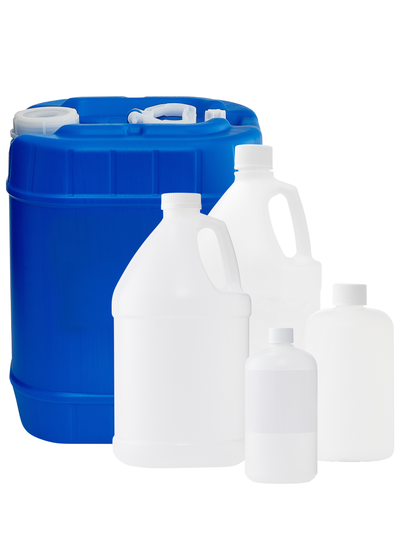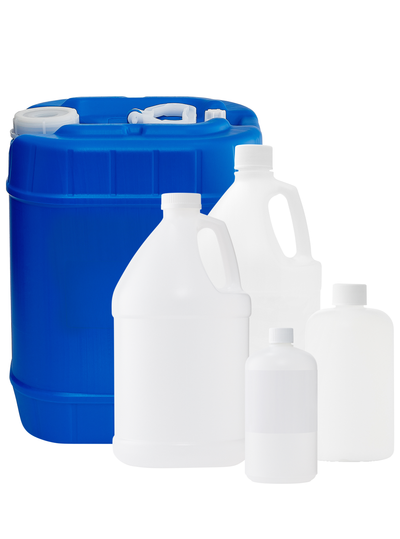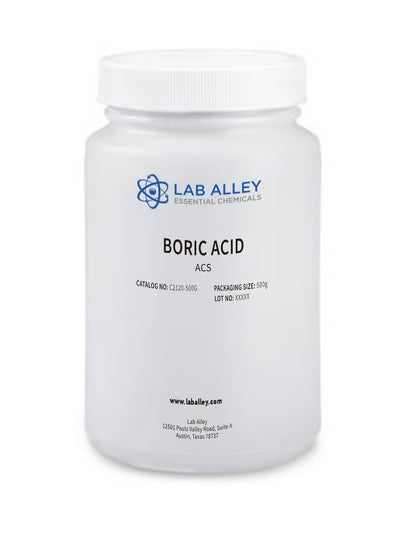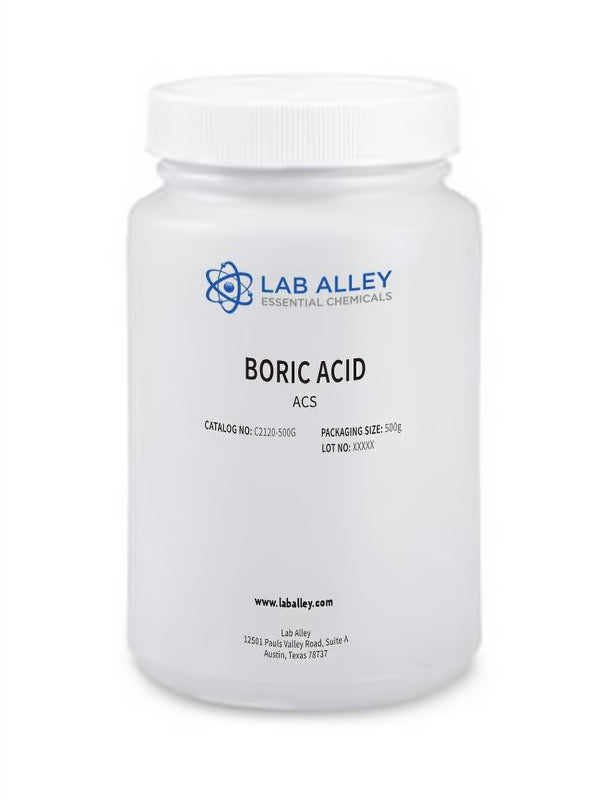
Business Support
Boric Acid Granular 99.8%, ACS Grade
Used As An Antiseptic, Antifungal, And Antiviral Agent
For questions regarding lead time, please contact a member of our Customer Care Team at customercare@laballey.com
Business Support
Description
About Boric Acid Granular 99.8%, ACS Grade
Boric Acid, or more specifically Orthoboric Acid, is a compound with three hydroxyl groups connected to a boron atom. The molecule has trigonal planar geometry centered at the boron atom. It is an odorless, water-soluble white solid. Since it cytotoxic, it is useful as an antiseptic, antifungal, and antiviral agent.
The ACS Grade is generally equivalent to the reagent grade and is acceptable for use in analytical applications and research laboratories.
COMMON USES AND APPLICATIONS
- Preservative
- Antiseptic, antiviral, antifungal agent
- Insecticide
- Fiberglass manufacture
- Silly Putty manufacture
- pH buffer
- Plant nutrient
INDUSTRIES
- Pharmaceutical Industry
- Agricultural Industry
- Research Laboratories
- Jewelry Industry
PRODUCT INFORMATION
Customer Reviews and Q&A
Safety and Shipping
Please contact Lab Alley to request a Boric Acid Granular Safety Data Sheet (SDS) and Certificate of Analysis (COA) for Boric Acid Granular ACS.
Business Support
Built for Business.
At Lab Alley, we simplify procurement with custom quotes, credit applications, tax exemptions, and fulfillment support, ensuring on-budget, on-time delivery - your success is our priority.
Apply for Credit
A Lab Alley credit account streamlines purchasing for your business. Our Customer Success Team is available to help you through every step of the process.
Request a Custom Quote
Get a fast, customized quote tailored to your specific needs. Our team ensures accurate pricing and availability to help streamline your purchasing process.

Additional Business Resources
Lab Alley provides access to essential certifications, documents, and other resources to support your business.
Product Manuals
Certificates of Analysis

Create a Lab Alley Account

RECEIVE exclusive offers, promotions, and discounts on chemicals.

Always have the product you need, when you need it with our AUTOSHIP program.









